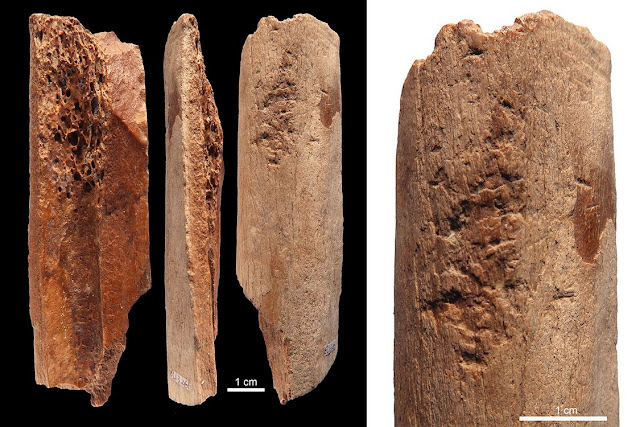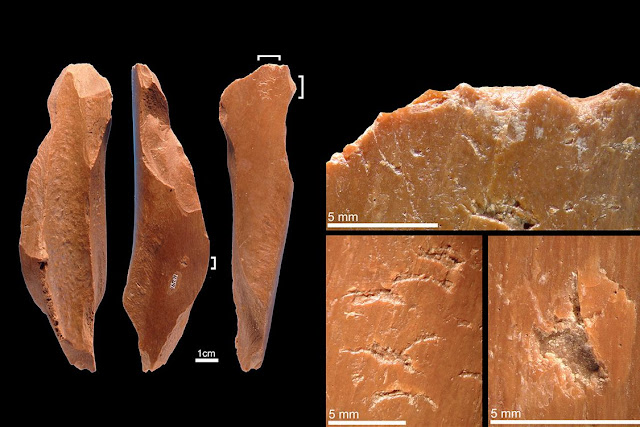An analysis of 115,000-year-old bone tools discovered in China suggests that the toolmaking techniques mastered by prehistoric humans there were more sophisticated than previously thought.
 |
| Retoucher on a long bone fragment from a large mammal [Credit: Luc Doyon] |
This major find, in which Luc Doyon of UdeM's Department of Anthropology participated, has just been published in the scientific journal PLOS ONE.
"These artefacts represent the first instance of the use of bone as raw material to modify stone tools found at an East Asian early Late Pleistocene site,"said Doyon. "They've been found in the rest of Eurasia, Africa and the Levante, so their discovery in China is an opportunity for us to compare these artifacts on a global scale.
Until now, the oldest bone tools discovered in China dated back 35,000 years and consisted of assegai (spear) points. "Prior to this discovery, research into the technical behaviour of humans inhabiting China during this period was almost solely based on the study of tools carved from stone," said Doyon.
Three types of hammers
The seven bone fragments analyzed by Luc Doyon and his colleagues were excavated between 2005 and 2015 at the Lingjing site in central China's Henan province. The artifacts were found buried at a depth of roughly 10 metres. At the time, the site was being actively used as a water spring for animals. Prehistoric humans likely used these water supply points for killing and butchering their animal prey.
The bone fragments were dated using optically stimulated luminescence (OSL), a method widely used by geologists for dating the sediment layers in which tools are found.
 |
| Retoucher on a modified cervid metapodial [Credit: Luc Doyon] |
The researchers have not yet determined which hominid species the users of these prehistoric tools belonged to, although they do know that they lived during the same period as Neanderthals and Homo sapiens. "The Lingjing site yielded two incomplete human skulls that suggest interbreeding between this species and Neanderthals," Doyon said. "But this is a hypothesis that remains to be confirmed through further investigation, such as paleogenetic studies."
More discoveries to come
The analyses that led to the identification of the bone tools were conducted by Doyon and his colleagues Francesco d'Errico (Université de Bordeaux), Li Zhanyang (Shandong University) and Li Hao (Chinese Academy of Sciences), at the Henan Provincial Institute for Cultural Relics and Archaeology.
 |
| Retoucher on antler of an Axis shansius subadult [Credit: Luc Doyon] |
"We only had access to a small sample, because the initial aim of the project was to study the anthropogenic nature of the modifications present on other bone fragments, and this project is still ongoing," he said. "The osseous artifacts excavated from this site were exceptionally well-preserved and the systematic analysis of all the bone assemblages during my upcoming postdoctoral research is certain to yield more exciting discoveries."
Source: University of Montreal [March 19, 2018]
